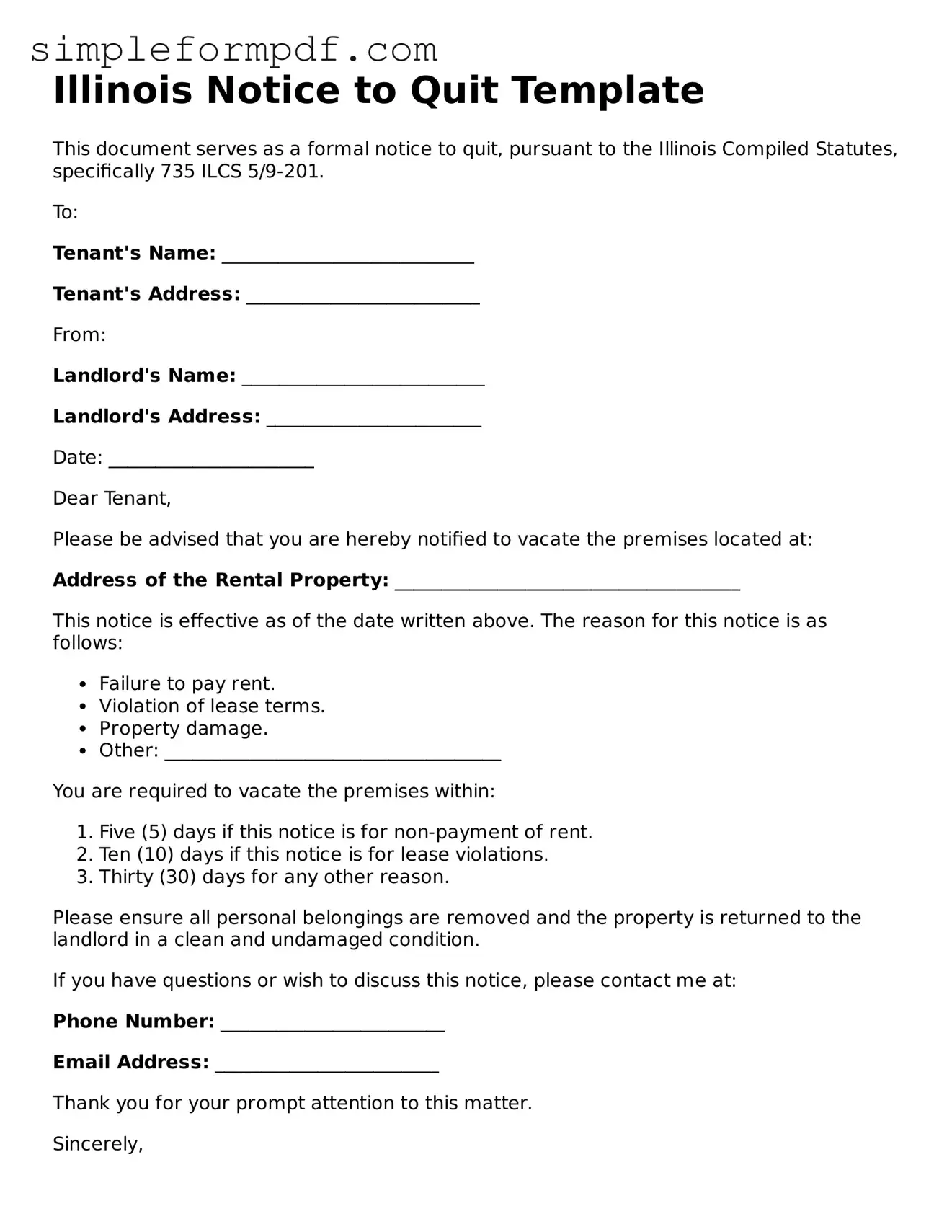Illinois Notice to Quit Template
This document serves as a formal notice to quit, pursuant to the Illinois Compiled Statutes, specifically 735 ILCS 5/9-201.
To:
Tenant's Name: ___________________________
Tenant's Address: _________________________
From:
Landlord's Name: __________________________
Landlord's Address: _______________________
Date: ______________________
Dear Tenant,
Please be advised that you are hereby notified to vacate the premises located at:
Address of the Rental Property: _____________________________________
This notice is effective as of the date written above. The reason for this notice is as follows:
- Failure to pay rent.
- Violation of lease terms.
- Property damage.
- Other: ____________________________________
You are required to vacate the premises within:
- Five (5) days if this notice is for non-payment of rent.
- Ten (10) days if this notice is for lease violations.
- Thirty (30) days for any other reason.
Please ensure all personal belongings are removed and the property is returned to the landlord in a clean and undamaged condition.
If you have questions or wish to discuss this notice, please contact me at:
Phone Number: ________________________
Email Address: ________________________
Thank you for your prompt attention to this matter.
Sincerely,
Landlord's Signature: ______________________
